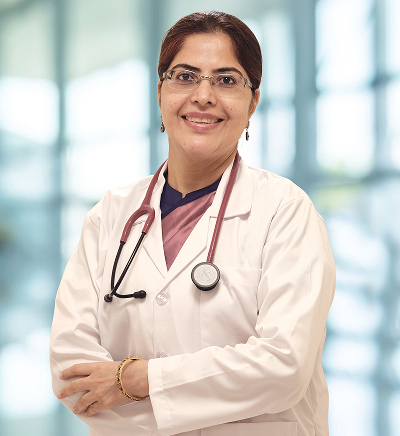The treatment of anaplastic large cell lymphoma depends on the stage of the disease, the subtype of ALCL, and the individual's overall health. Usually, for systemic ALCL, chemotherapy is the standard treatment. For primary cutaneous and BIA ALCL, surgery is preferred.
Common treatment options based on the type of ALCL may include:
Systemic ALCL: Both anaplastic large cell lymphoma ALK-positive and ALK-negative react to traditional systemic chemotherapy. Notably, systemic chemotherapy is a process in which drugs that destroy cancer cells are injected and distributed through the bloodstream via a vein, killing cancer cells.
Chemotherapy usually includes a combination of drugs that collectively work together to kill cancer cells. Some common drug combinations are:
BV-CHP: Brentuximadvedotin, cyclophosphamide, doxorubicin or hydroxydaunorubicin, and prednisone
CHOP: Cyclophosphamide, doxorubicin or hydroxydaunorubicin, vincristine, and prednisone
CHEOP: Cyclophosphamide, doxorubicin or hydroxydaunorubicin, etoposide, vincristine, and prednisone.
Sometimes, cancer may recur after some time. If the doctor suspects that the chance of recurrence is high, then he/she might suggest a stem cell transplant during remission. This is a procedure in which cells that were destroyed during chemotherapy, are replaced with healthy cells. If cancer still returns, then other kinds of chemotherapy treatments are suggested.
Primary Cutaneous ALCL: Anaplastic large cell lymphoma treatment guidelines from medical authorities suggest that surgery is the most common treatment for primary cutaneous ALCL. If cancer has infected lymph nodes, radiation therapy is suggested as well, in which energy is directed toward cancer cells, thereby killing them.
Typically, primary cutaneous ALCL returns within five years of treatment, and additional surgery or radiation therapy might be needed to treat it.
If the localized tumour can’t be removed with surgery, the other treatment options available are:
Oral methotrexate: This is a drug that is used to treat non-Hodgkin's lymphoma.
Bexarotene: This drug is used to treat T cell lymphomas.
Brentuximab Vedotin: This drug is used to not only treat systemic ALCL, but also recurring ALCL.
Interferon: This drug is used to assist the immune system to identify and fight cancer cells.
3. BIA ALCL: The treatment for BIA ALCL is surgery that is done to remove the implant and the surrounding cancer cells. If surgery is not an option, then the doctor will prescribe radiation therapy.
If cancer has returned or spread to various parts of the body, chemotherapy that is used to treat ALK negative ALCL might be suggested. This includes:
CHOP: Cyclophosphamide, doxorubicin or hydroxydaunorubicin, vincristine, and prednisone
Brentuximab vedotin
Lifestyle changes that help include:
Consumption of adequate calories and protein
Eating frequent small meals in comparison to few large ones
Stay active
Wash hands frequently
Keep distance from sick people
Get adequate rest
Psychotherapy support
Get support from friends and family
Join a local ALCL support group
Ask doctors for ways to ease symptoms like nausea
The treatment option and the procedure are also influenced by the patient’s health condition and the opinion of the treating doctor.
Cost of the Anaplastic Large Cell Lymphoma Treatment
The cost of anaplastic large cell lymphoma in India depends on several factors including the stage and the type of cancer, the patient’s age, patient comorbidities, treatment modalities, hospital type and location, doctor’s experience, insurance coverage, and much more.
To know the exact cost of anaplastic large cell lymphoma in India, one must consult their doctor. However, the table below also provides the approximate cost of various treatment modalities.
Surgery Type | Surgery Cost |
|---|
Chemotherapy | ₹ 75,000 to ₹ 2,50,000 |
|---|
Radiation Therapy | ₹ 60,000 to ₹ 2,00,000 |
|---|
Stem Cell Transplant | ₹ 15,00,000 to ₹ 27,00,000 |
|---|
Anaplastic Large Cell Lymphoma Survival Rate
Anaplastic large cell lymphoma survival rate depends on the type of ALCL and the international prognostic index or IPI score. ALK-positive ALCL has a greater survival rate in comparison to ALK-negative ALCL. The five-year survival rate for ALK-positive ALCL ranges from 33 to 90%, while that of ALK-negative ALCL ranges from 13 to 74%.
For primary cutaneous ALCL, the survival rate is good. Studies show that primary cutaneous ALCL usually returns within five years, but follow-up treatment options are effective in increasing the lifespan. After diagnosis of primary cutaneous ALCL, the survival rate is about 80%.
Breast implant-associated anaplastic large cell lymphoma survival rate is excellent, and surgically removing the cancer eliminates it permanently.





























